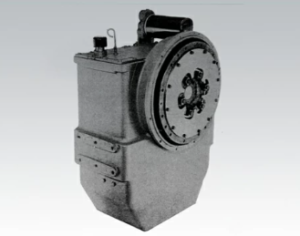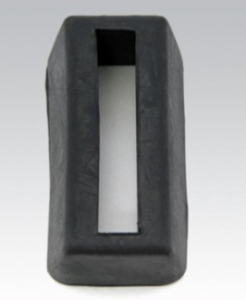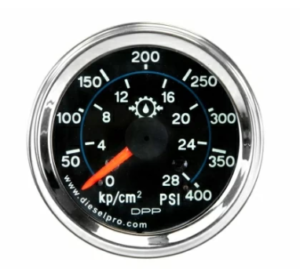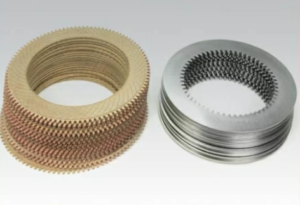
Introduction
The Twin Disc MG516 and MG5161 marine gears are among the most dependable transmissions for heavy-duty marine applications. Designed for commercial vessels, they deliver smooth operation, excellent torque transmission, and long service life when maintained properly.
This comprehensive FAQ guide covers 50 of the most commonly asked questions, grouped into logical sections for easy reference—including installation, maintenance, operation, troubleshooting, fluids, and parts.
Disclaimer: For precise torque values, tolerances, and procedures, always refer to the official Twin Disc service manual or contact Diesel Pro Power’s marine support team.

Parts Catalog for Twin Disc MG516 Marine Transmissions
Rebuilt Twin Disc MG516 Marine Transmissions
Plate Kit For Twin Disc MG516 Marine Transmission
Gasket Kits For Twin Disc MG516 Marine Transmission
A. General and Specifications

1. What is the Twin Disc MG516 marine gear?
It’s a heavy-duty marine transmission designed to couple with diesel propulsion engines. It transfers engine torque to the propeller shaft, enabling forward, neutral, and reverse operation.
2. What’s the difference between MG516 and MG5161?
Both models are part of the same family but may vary in gear ratio, shaft configuration, or mounting options. Always reference your serial number before ordering parts.
3. What is the typical gear ratio?

Common ratios include 2.5:1, 3.0:1, and 3.5:1, but variants may exist depending on configuration.
4. What is the dry weight of the MG516?
Approximately 1,400–1,600 lbs (635–725 kg) depending on configuration.
5. What are the overall dimensions?
Roughly 36–40 inches long, 30 inches wide, and 36 inches high. Dimensions vary by gear ratio and flange configuration.
6. What is the recommended operating oil pressure?
- Neutral: 15–50 PSI
- Engaged (FWD or REV): 250–310 PSI
7. What is the oil capacity?
Approximately 3.5–4.5 gallons (13–17 liters), depending on cooler and hose length.
B. Operation
8. Can it be shifted under load?
Yes, the MG516 is designed for clutch engagement under low-load conditions, but avoid sudden RPM changes when shifting.
9. How is it controlled?
Via either a manual lever system or electronic shift control like the EC300 system.
10. Does it have a neutral position?
Yes, allowing engine operation without propeller movement.
11. What type of vessel is it best for?
Tugs, ferries, pilot boats, trawlers, commercial fishing boats, support craft, and offshore service vessels.
12. Is it suitable for twin engine applications?
Yes, and it can be matched with electronic control systems for precise synchronization.
C. Oil and Fluid Management

13. What type of oil should I use?
Use SAE 30 or SAE 40 non-detergent mineral oil, meeting Twin Disc specs. Always match temperature range and duty cycle.
14. Can I use synthetic oil?
Consult Twin Disc or Diesel Pro Power support first. Some synthetics are compatible but must meet all friction and viscosity requirements.
15. How often should the oil be changed?
Every 250–500 hours or once per season. Sooner if oil is contaminated, dark, foamy, or burned.
16. How do I check the oil level?
Use the dipstick or sight glass on the gear case with the engine off. Transmission must be level and oil warm.
17. What if the oil is milky?
Milky oil indicates water contamination—possibly from the cooler. Stop operation immediately and flush system.
D. Maintenance & Inspection
18. How often should I replace the oil filter?
Every oil change—even if the engine filter interval differs.
19. What’s the best way to inspect clutch wear?
Monitor shift delays, engagement feel, and oil contamination. Physical inspection requires disassembly.
20. Should I use additives?
Only use Twin Disc-approved additives. Avoid aftermarket friction modifiers or detergents.
21. What are signs of cooler failure?
- High oil temps
- Water in oil
- Leaks at cooler connections
- Reduced flow on testing
22. How do I rotate the shaft in storage?
Use a wrench or turning bar on the output flange. Rotate 10–15 revolutions monthly to maintain oil film on clutch packs.
23. How do I winterize the MG516?
Drain or replace oil with corrosion-inhibited fluid, plug all ports, rotate shaft monthly, and store in a dry, protected location.
E. Troubleshooting
24. Why does the transmission slip in gear?
- Worn clutch discs
- Low oil pressure
- Burnt friction plates
- Incorrect oil viscosity
25. Why is there a delay when shifting?
- Valve body varnish
- Weak solenoid
- Worn clutch piston seals
- Low idle RPM
26. What does it mean if there’s no drive in forward or reverse?
- Failed oil pump
- Empty oil reservoir
- Broken input shaft
- Valve body blockage
27. My oil is foamy—what should I do?
Foam suggests air in the suction side—check hoses, cooler, and suction screen. Replace oil and address the root cause.
28. What causes high transmission temps?
- Blocked cooler
- Overfilled or underfilled oil
- Clutch slippage
- Worn bearings or thrust washers
29. Why does the transmission vibrate under load?
- Misaligned shaft
- Damaged output flange
- Loose bolts or worn mounts
30. I have pressure in neutral, but none in gear—why?
Likely a stuck or failed valve spool or solenoid. Inspect control valve.
F. Valve & Control System
31. What type of solenoid is used?
12V or 24V hydraulic solenoids, depending on vessel system. Always match voltage before replacement.
32. How do I test a solenoid?
Use a multimeter—resistance should be between 4–12 ohms. Manually apply power and listen for clicking.
33. Can the MG516 be manually shifted?
Yes, with manual lever versions. On electronic versions, manual override may be possible with mechanical manipulation of the valve body.
34. Why are shifts jerky?
- Sticky valve spool
- Poor clutch pack alignment
- Low oil viscosity
- Solenoid coil breakdown
G. Rebuild & Replacement

35. When should I rebuild the MG516?
- Slipping despite correct pressure
- Contaminated oil with metal debris
- Noisy operation or vibration
- Poor engagement in one or both directions
36. What does a rebuild include?
Typically: clutch packs, seals, O-rings, bearings, gaskets, thrust washers, and valve cleaning.
37. How long does a rebuild take?
2–5 days depending on parts availability and technician skill. Allow longer if machine work or new gears are needed.
38. When should I replace rather than rebuild?
- Cracked housing
- Gear tooth failure
- Excessive shaft scoring
- Parts obsolete or cost exceeds value
39. Where can I buy a rebuild kit?
At Diesel Pro Power’s Twin Disc MG516 Parts Page—kits available in stock, ship globally.
40. Do I need special tools for rebuild?
Yes. You’ll need:
- Press tools
- Snap ring pliers
- Micrometers
- Seal installers
- Alignment tools
H. Storage and Lay-Up
41. How do I store the MG516 for long periods?
- Drain or fill with preservative oil
- Seal all openings
- Rotate shaft monthly
- Cover with breathable tarp
- Store level, horizontally supported
42. Should I remove the cooler during storage?
Not necessary, but flushing and capping lines is advised to prevent internal corrosion.
43. Can I store the MG516 outdoors?
Yes, if well-covered and sealed. Avoid direct exposure to water, humidity, and sun.
44. How do I recommission after storage?
- Drain old oil
- Install fresh oil and new filter
- Rotate shaft manually
- Inspect for leaks or corrosion
- Run engine at idle before full load
I. Parts & Sourcing
45. Where can I get replacement filters?
From Diesel Pro Power—both spin-on and cartridge styles.
46. Do I need the transmission serial number?
Yes—always provide the full model number, gear ratio, and serial number when ordering parts or kits.
47. Are aftermarket parts as good as OEM?
Diesel Pro Power provides premium aftermarket parts that meet or exceed OEM tolerances—often with shorter lead times and better pricing.
48. Can I upgrade the MG516 for higher output?
Only within the design limits. Gear ratio or cooling upgrades are possible, but exceeding torque specs risks internal failure.
J. Performance and Upkeep
49. How long does the MG516 last?
With proper maintenance, many MG516 units last 10,000–20,000 hours or more before major overhaul.
50. What’s the best way to extend service life?
- Change oil regularly
- Keep shaft aligned
- Monitor pressure and temperature
- Use clean filters
- Flush cooler annually
- Store properly during downtime
Final Word
Understanding your Twin Disc MG516 marine gear inside and out helps prevent costly failures, extend service life, and ensure reliability under harsh conditions. Whether you’re a fleet operator, marine mechanic, or commercial captain, this FAQ gives you a strong foundation for successful transmission ownership.

Rebuilt Twin Disc MG516 Marine Transmissions
Plate Kit For Twin Disc MG516 Marine Transmission
Gasket Kits For Twin Disc MG516 Marine Transmission
Videos About Twin Disc Transmissions
6 Reasons Your Twin Disc Transmission Has Low Oil Pressure
7 Reasons Your Twin Disc Transmission Is Overheating
3 Reasons Your Clutch Plates in Your Twin Disc Transmission Are Making Excessive Noise
Bull Gear On A Twin Disc Transmission
Rebuilt Twin Disc Transmissions



 Free US Calls: 1-888-433-4735
Free US Calls: 1-888-433-4735 International: 305-545-5588
International: 305-545-5588